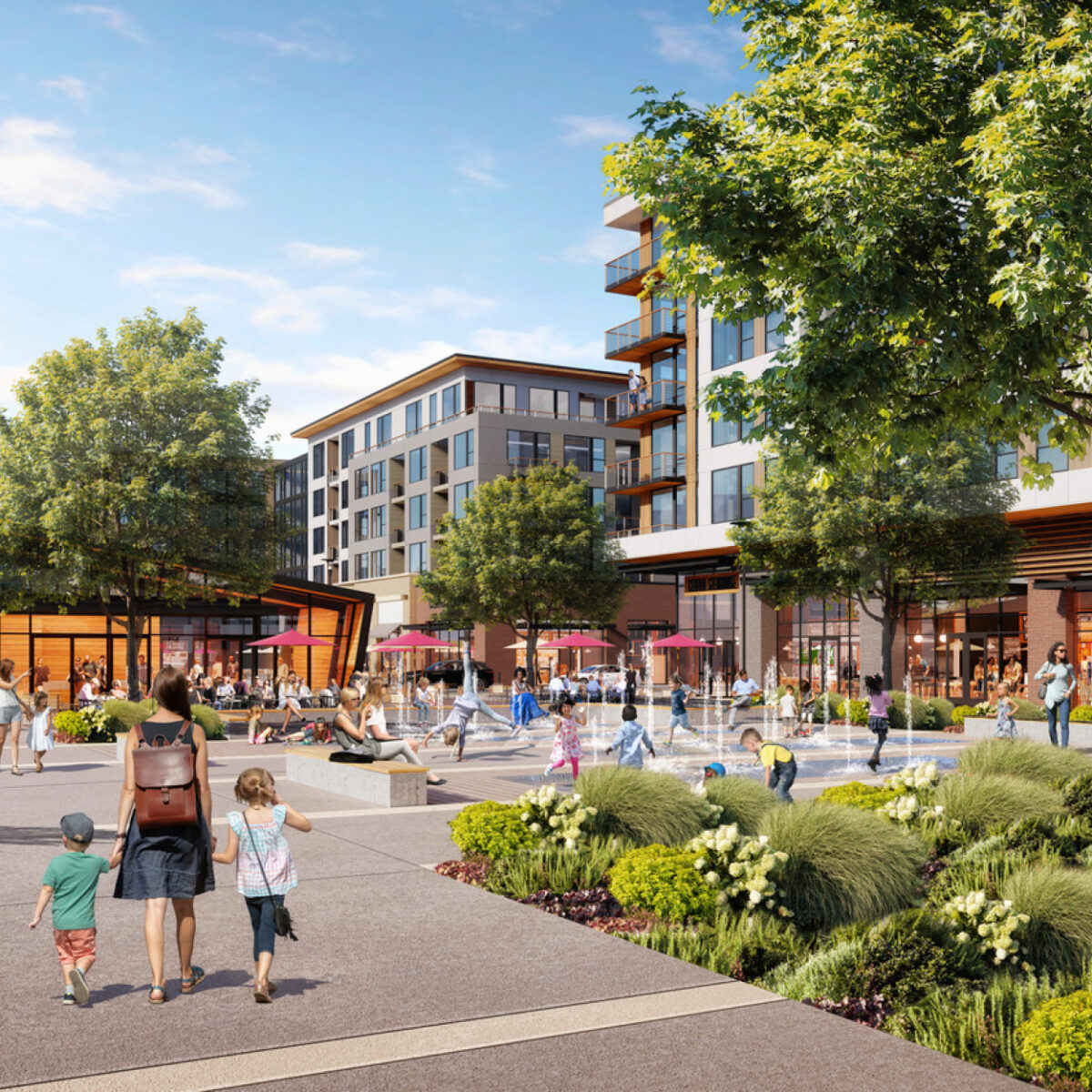Turning Malls Into Neighborhoods
March 2, 2023 / Urban Land Institute
March 2, 2023 / Urban Land Institute

From apartment buildings rising in shopping center parking lots to the redevelopment of dead mall sites as housing, retail-to-residential conversions are an increasing trend.
In its work on mall redevelopment, Seattle-based architecture firm GGLO has focused on how to insert residential into the mall environment and achieve a harmonious balance. One salient example of GGLO’s work is Avalon Alderwood Place, a mixed-use 328-unit multifamily development located on the former site of a Sears department store at Alderwood Mall in Lynnwood, Washington, which was designed on behalf of development partners AvalonBay Communities and Brookfield Properties. GGLO came up with a biophilic, or nature-inspired, design that emphasized the environment of the Pacific Northwest—the connectedness with the mountains, for example—and used materials such as wood and stone, and colors that occur in nature. “We’ve tried to bring in those sorts of natural materials and colors as a kind of response to the mall itself,” GGLO architect and principal James Bradley says, adding that “it’s meant to be contrasting and complement at the same time. We’re trying to blend the two.”
GGLO also has designed housing infill for Shoreline Place, a strip mall 12 miles north of downtown Seattle, on behalf of developer Merlone Geier, which bought a portion of the site. In addition to about 1,000 new housing units, the plan involves demolishing another massive former Sears building and creating the equivalent of a walkable downtown core, with interconnected open spaces that will function as “public living rooms.” The mall’s conversion to a mixed-use community could take 10 to 20 years, according to the city of Shoreline’s website. As with Alderwood, the challenge is creating an identity that residents can connect with—“how are you going to create a ‘there’ there,” says GGLO architect and principal Jeff Foster.